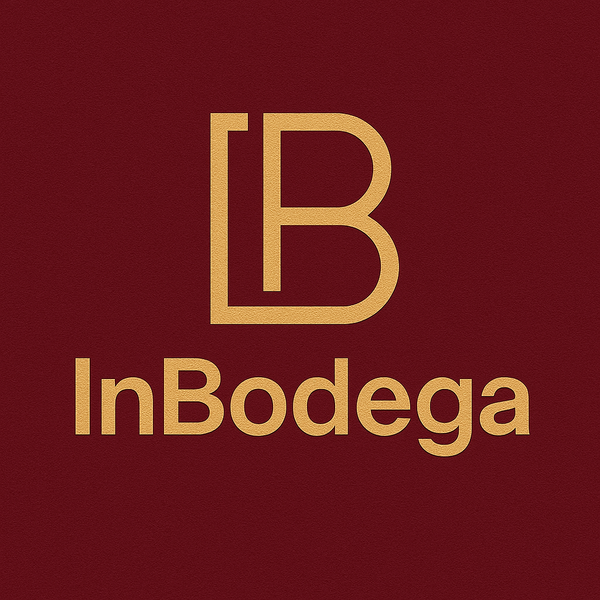
Cayuse Vineyards: Inside the Cult Winery Redefining Walla Walla Wine
Share
Cayuse Wine: How Christophe Baron Turned Walla Walla Into a Cult Phenomenon
If you're searching for Cayuse wine, stop scrolling. This is the post you’ve been trying to find—because we’re not here to recite tasting notes or copy-paste vineyard stats. We’re here to talk about what Cayuse really is: a raw, radical, boundary-pushing winery that turned a patch of rocks in Walla Walla into one of the most iconic terroirs in American wine.
Founded by Christophe Baron, a French vigneron who said no to Champagne royalty and yes to volcanic rubble in eastern Washington, Cayuse Vineyards is a masterclass in going your own damn way—and making the wine world chase you for it.
And yes. Somehow, we got our hands on a few bottles. How? Don’t worry about it. Just keep reading.

What Makes Cayuse Wine Different?
Cayuse is not your average Walla Walla winery. First, there’s the dirt—or lack thereof. Cayuse was the first winery in the region to plant vineyards on cobblestone soil, the kind of place most people would bulldoze or pave over. But those fractured basalt rocks turned out to be perfect for Rhône-style varietals. The rocks reflect heat, push the vines to dig deep, and produce powerfully expressive, deeply mineral wines.
Cayuse wines don’t taste like the fruit-forward, polished bottles lining most supermarket shelves. They taste like meat, smoke, blood, olives, ash, iron, and soul. These are wines that punch and whisper at the same time. That challenge you. That stay in your head for days.
The Man Behind the Madness: Christophe Baron
If you're googling Christophe Baron Cayuse, you're probably already intrigued by the legend. He grew up in Champagne. His family has been growing Pinot Noir for generations. But Baron wanted to do something different—something wilder, weirder, more alive. So in the mid-90s, he came to the United States, wandered into the Walla Walla Valley, and found a field no one else wanted.
He took one look at those rocks and decided that was it.
Since then, Baron has made it his mission to interfere as little as possible with the winemaking process. Cayuse wines are:
-
Biodynamically farmed
-
Fermented with native yeasts
-
Bottled without fining or filtration
-
Aged with minimal new oak
This is low-intervention winemaking, but with swagger. It’s not precious or performative. It’s just real.
The Cayuse Bottles You Need to Know
Let’s talk about the lineup—the wines that made Cayuse a cult. These bottles don’t just have loyal followings. They have waitlists. They have fanatics. They have nicknames in collector circles.
Bionic Frog Syrah
The bottle that started the fire. Bionic Frog is Cayuse’s most famous wine, and one of the most singular Syrahs in America. Meaty, gamey, olive-brined, smoky, savage. It’s not trying to be pretty. It’s trying to be unforgettable. And it is.
Cailloux Vineyard Syrah
This is the original Cayuse vineyard—Baron’s first planting and the first proof of concept that these cobblestones could make world-class wine. Cailloux is all savory intensity: smoked meat, pepper, lavender, blood, and a flash of red fruit that disappears as quickly as it came.
Armada Vineyard Syrah
Darker, deeper, more structured. Armada is Cayuse turned inward. Dense spice, floral edges, black licorice, tobacco, and volcanic grip. It’s the wine you open after a fight or a masterpiece. Maybe both.
En Cerise Vineyard Syrah
Cerise means “cherry” in French, but this is not a fruit bomb. It’s floral and earthy, with that Cayuse signature funk. A little prettier than Cailloux, a little wilder than Armada. Somewhere in between, and fully itself.
Edith Pinot Noir
Named after Baron’s grandmother, Edith is Baron’s love letter to Burgundy. Silky red fruit, rose petals, earthy minerality, and real tension. It’s refined, yes—but also haunting. Like someone you dated and still dream about.
The Widowmaker (Cabernet Sauvignon)
Cabernet Sauvignon from the En Chamberlin Vineyard, but unlike any Cab you’ve ever had. No polish. No sweet oak. Just iron, black currant, leather, cedar, and ash. It’s brooding and serious and unforgiving. A knife in a velvet box.
How to Buy Cayuse Wine
Here’s the truth: you don’t just buy Cayuse. You get on the mailing list, wait for years, and maybe—maybe—they’ll allocate you a few bottles.
Retail? Basically nonexistent. And when it does show up online, it disappears faster than a bottle of Bionic Frog at a sommelier party.
But—somehow—we made it happen. InBodega has secured a tiny stash of Cayuse bottles through, let’s say, discreet connections. It wasn’t easy. It wasn’t public. But it’s real. And if you’re reading this, you’re ahead of the game.
Why Cayuse Belongs at InBodega
Cayuse is everything we built InBodega to champion. This isn’t a winery chasing trends or playing to the crowd. This is a winery built on conviction, on labor, on dirt, on history, and on fire. Cayuse is wine for people who want more than just flavor. It’s for people who want soul.
And yeah, the labels are cool. But what’s inside? That’s what matters.
Cayuse isn’t for everyone. It doesn’t want to be. But if you’ve read this far, we think you’re the kind of person who gets it.
Get on the List
We’re not blasting this to our entire list. We’re not promoting it with ads. This is just for the people who pay attention.
Sign up for Bodega Confidential, and when these Cayuse bottles go live, you’ll be the first—and probably only—to know.
No gatekeeping. No hype machine. Just real wine, real rare, and finally—finally—within reach.
